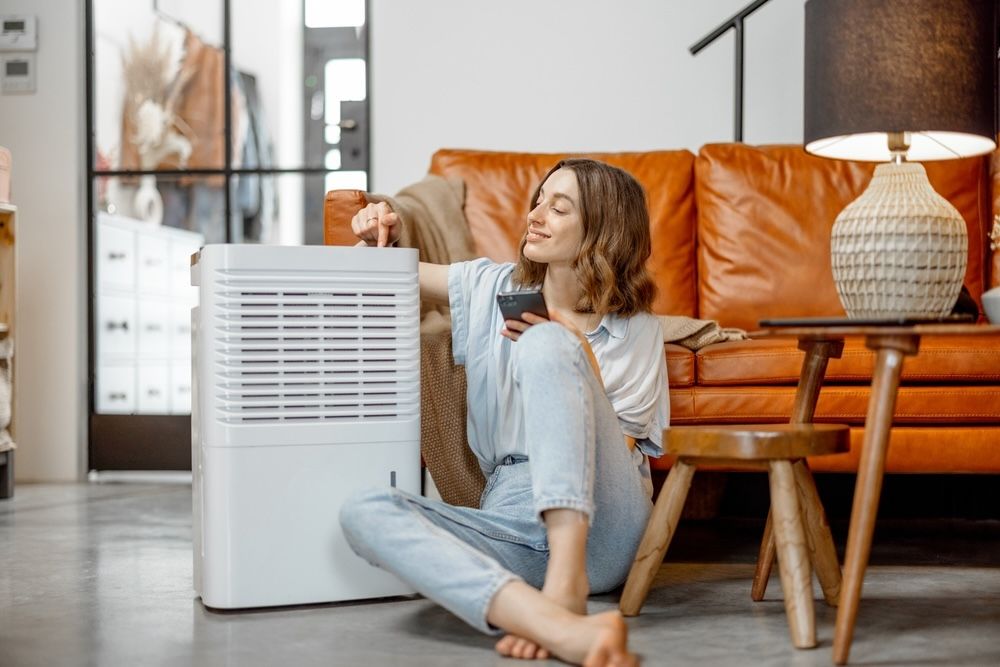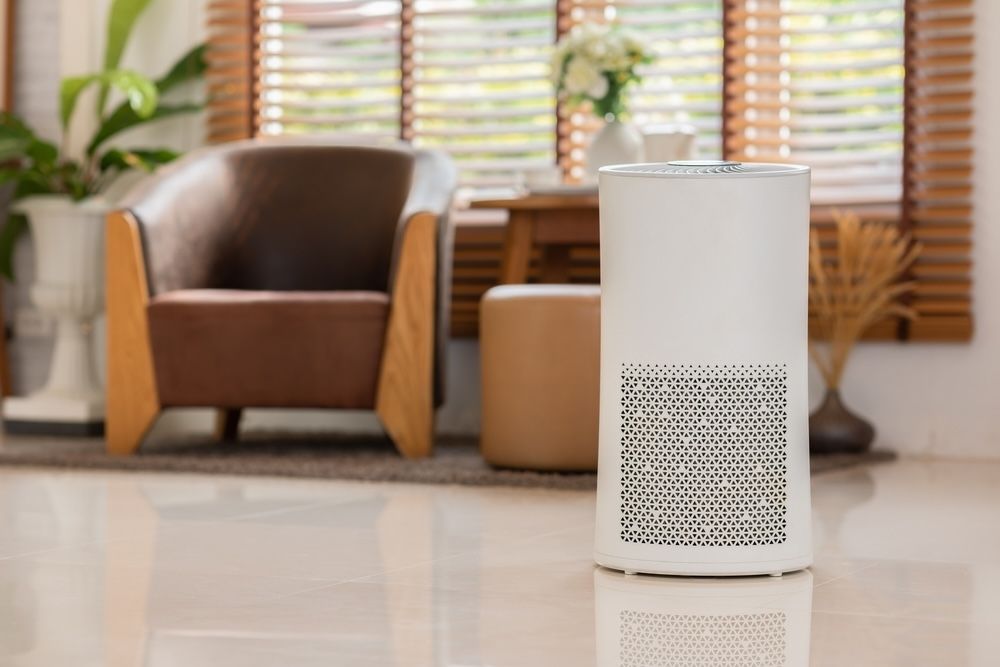How to Clean and Maintain Your Air Purifier for Optimal Performance

Air purifiers have become essential appliances in many households, especially for those living in urban areas with high pollution levels or individuals with allergies. However, to ensure your air purifier works efficiently and lasts longer, regular cleaning and maintenance are crucial. This article will guide you through the steps to clean and maintain your air purifier, ensuring it operates at peak performance and continues to provide you with clean, healthy air.

Why Regular Maintenance is Important
Regular maintenance of your air purifier is vital for several reasons:
Efficiency: A well-maintained air purifier works more efficiently, effectively removing pollutants from the air. When the filters and other components are clean, the air purifier can function without obstruction, allowing it to process air more quickly and effectively. Clogged filters force the unit to work harder, which not only reduces its efficiency but also increases energy consumption, leading to higher electricity bills.
Longevity: Regular cleaning and part replacement can extend the lifespan of your air purifier. Just like any other appliance, an air purifier with regularly maintained components will encounter fewer operational problems and breakdowns. By ensuring that all parts are clean and functioning correctly, you minimize the risk of damage that can result from overworked or blocked components, thus extending the life of the machine.
Health Benefits: Ensuring your air purifier is clean and functional helps maintain better indoor air quality, which is crucial for health, particularly for those with respiratory issues. A dirty air purifier cannot effectively remove contaminants from the air, allowing allergens, dust, and other particles to circulate within your home. For people with allergies, asthma, or other respiratory conditions, maintaining clean air is essential to avoid exacerbating symptoms.

Step-by-Step Guide to Cleaning Your Air Purifier
1. Unplug the Unit
Safety first. Always unplug your air purifier before performing any maintenance. This step is crucial to avoid any electrical hazards while you are cleaning or replacing parts. Additionally, unplugging ensures that the air purifier is completely powered down, preventing accidental activation during maintenance.
2. Clean the Exterior
Use a soft, damp cloth to wipe down the exterior of the unit. Avoid using harsh chemicals or abrasive materials that could damage the surface. Gentle cleaning agents like mild soap and water can be used to remove stubborn spots, but always ensure the cloth is only slightly damp to avoid water entering the unit.
Pay attention to the air intake and outlet grills, which can accumulate dust and debris. These areas are critical for the airflow and should be kept clear to maintain efficient operation. You can use a small brush or vacuum cleaner attachment to remove dust from these grills, ensuring they are free from blockages.
3. Filter Maintenance
Pre-Filter: Many air purifiers have a pre-filter to catch larger particles. This filter should be cleaned regularly, typically every month. Remove the pre-filter and gently vacuum it or wash it with water if the manufacturer allows. Regular cleaning of the pre-filter prevents the main filter from getting clogged quickly, thereby extending its life and maintaining the purifier's efficiency.
HEPA Filter: The HEPA filter is crucial for capturing small particles like pollen, pet dander, and dust mites. Check the manufacturer's instructions for replacement intervals, usually every 6 to 12 months. Some HEPA filters can be gently vacuumed to extend their life. However, be cautious not to damage the delicate fibers of the filter. Regular replacement is essential because, over time, the filter becomes saturated with particles and can no longer effectively capture new contaminants.
Carbon Filter: If your air purifier has a carbon filter for odors and VOCs, it will also need regular replacement, typically every 3 to 6 months. Check the specific guidelines for your model. Carbon filters are excellent at trapping gases and odors but can become saturated relatively quickly. Regular replacement ensures that your air purifier continues to remove unpleasant smells and harmful gases from your indoor air.
4. UV-C Light
Some air purifiers come with a UV-C light to kill bacteria and viruses. This component usually has a longer lifespan but should be checked periodically for functionality. Replace it according to the manufacturer’s recommendations. The UV-C light works by disrupting the DNA of microorganisms, rendering them harmless. Ensuring it functions correctly is vital for maintaining the air purifier's ability to neutralize biological contaminants effectively.

5. Sensors and Indicator Lights
Clean any sensors with a soft brush or cloth to ensure accurate readings. Dust and dirt on sensors can lead to inaccurate air quality readings, which may cause the air purifier to work inefficiently. Regular cleaning of these sensors ensures that the air purifier can monitor and respond to changes in air quality effectively.
Reset any indicator lights after replacing filters to ensure the air purifier can correctly monitor its maintenance needs. Many modern air purifiers have indicator lights that notify you when it’s time to clean or replace filters. Resetting these indicators after maintenance helps keep track of the unit's condition and ensures timely upkeep.
6. Reassemble and Test
After cleaning and replacing the necessary parts, reassemble your air purifier carefully. Make sure all components are correctly placed and securely fastened to avoid any operational issues.
Plug it back in and run a quick test to ensure everything is functioning correctly. Check for any unusual noises or operational problems that might indicate improper assembly. Running the purifier for a few minutes will also help circulate air through the system, ensuring that any loose dust is captured by the filters.
Additional Tips for Air Purifier Maintenance
Location
Place your air purifier in an optimal location, away from walls and obstructions, to ensure good airflow. Placing it in a central location allows it to clean the air more effectively. Avoid placing it behind furniture or in tight corners where airflow is restricted, as this can significantly reduce its efficiency.
Regular Operation
For continuous air quality improvement, run your air purifier regularly. Some models are designed to run 24/7. Constant operation ensures that the air in your home is continuously filtered, reducing the build-up of contaminants. However, check your model's specifications to understand the recommended operating schedule.
Monitor Air Quality
Use the air quality indicator on your unit (if available) to gauge when maintenance might be needed. Modern air purifiers often come equipped with sensors that measure air quality and adjust the unit's operation accordingly. Monitoring these indicators helps you stay aware of your indoor air quality and prompts timely maintenance actions.

Endnotes
Maintaining your air purifier is a straightforward process that can significantly impact its performance and longevity. By following these cleaning and maintenance tips, you can ensure your air purifier continues to provide clean and healthy air for your home. Regular upkeep not only helps in maintaining optimal functionality but also enhances the overall indoor air quality, contributing to a healthier living environment.
For more detailed guides on appliance care and maintenance, explore our other articles in the Appliance Care & Cleaning section. Whether you need tips on cleaning your espresso machine or maintaining your refrigerator, we've got you covered!
Check more articles on our blog

How To Keep Your MacBook Clean: Simple Tips for Maximum Impact

Learn 4 Good Reasons Why You Should Bike To Work

How To Clean An Espresso Machine? - Practical Tips
